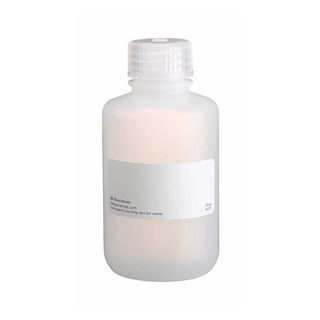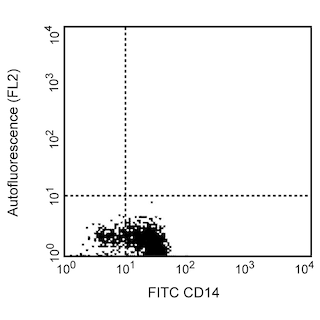-
Reagents
- Flow Cytometry Reagents
-
Western Blotting and Molecular Reagents
- Immunoassay Reagents
-
Single-Cell Multiomics Reagents
- BD® AbSeq Assay
- BD Rhapsody™ Accessory Kits
- BD® Single-Cell Multiplexing Kit
- BD Rhapsody™ Targeted mRNA Kits
- BD Rhapsody™ Whole Transcriptome Analysis (WTA) Amplification Kit
- BD Rhapsody™ TCR/BCR Profiling Assays for Human and Mouse
- BD® OMICS-Guard Sample Preservation Buffer
- BD Rhapsody™ ATAC-Seq Assays
-
Functional Assays
-
Microscopy and Imaging Reagents
-
Cell Preparation and Separation Reagents
-
Training
- Flow Cytometry Basic Training
-
Product-Based Training
- BD FACSDiscover™ S8 Cell Sorter Product Training
- Accuri C6 Plus Product-Based Training
- FACSAria Product Based Training
- FACSCanto Product-Based Training
- FACSLyric Product-Based Training
- FACSMelody Product-Based Training
- FACSymphony Product-Based Training
- HTS Product-Based Training
- LSRFortessa Product-Based Training
- Advanced Training
-
- BD® AbSeq Assay
- BD Rhapsody™ Accessory Kits
- BD® Single-Cell Multiplexing Kit
- BD Rhapsody™ Targeted mRNA Kits
- BD Rhapsody™ Whole Transcriptome Analysis (WTA) Amplification Kit
- BD Rhapsody™ TCR/BCR Profiling Assays for Human and Mouse
- BD® OMICS-Guard Sample Preservation Buffer
- BD Rhapsody™ ATAC-Seq Assays
-
- BD FACSDiscover™ S8 Cell Sorter Product Training
- Accuri C6 Plus Product-Based Training
- FACSAria Product Based Training
- FACSCanto Product-Based Training
- FACSLyric Product-Based Training
- FACSMelody Product-Based Training
- FACSymphony Product-Based Training
- HTS Product-Based Training
- LSRFortessa Product-Based Training
- United States (English)
-
Change country/language
Old Browser
This page has been recently translated and is available in French now.
Looks like you're visiting us from {countryName}.
Would you like to stay on the current country site or be switched to your country?




.png)

Analysis of GFAP in differentiated human Neural Stem Cells (NSC). NSC derived from H9 cells (WiCell, Madison, WI) were differentiated in NSC differentiation medium [containing N2 and B-27 supplements (Life Technologies), recombinant human BDNF and GDNF (Peprotech), dibutryl cyclic AMP (Sigma)] for 11 days followed by AGM™ Astrocyte Growth Medium (Lonza) for 16 days. The cells were fixed (BD Cytofix™ buffer, Cat. No. 554655) for 20 minutes at room temperature, permeabilized with BD™ Phosflow Perm/Wash Buffer I (Cat. No.557885), and then stained with PE Mouse anti-GFAP (left panel) and co-stained with APC mouse anti-CD44 (Cat. No. 559942) as shown in the right panel. This antibody conjugate also works with BD ™ Phosflow Perm Buffer III. Flow cytometry was performed on a BD LSR™ II flow cytometer.

Analysis of GFAP in Neural Stem cells (NSC). NSC were isolated by sorting from Embryoid bodies and were grown for 8 passages post sort, fixed (BD Cytofix™ buffer, Cat. No. 554655) for 20 minutes at room temperature, permeabilized with BD™ Phosflow Perm Buffer I (Cat. No.557885), and then stained with either PE Mouse anti-GFAP (solid line) or PE Mouse IgG2b, κ Isotype Control (Cat. No. 555058, dashed line).
.png)

BD Pharmingen™ PE Mouse anti-GFAP

BD Pharmingen™ PE Mouse anti-GFAP
.png)
Regulatory Status Legend
Any use of products other than the permitted use without the express written authorization of Becton, Dickinson and Company is strictly prohibited.
Preparation And Storage
Product Notices
- This reagent has been pre-diluted for use at the recommended Volume per Test. We typically use 1 × 10^6 cells in a 100-µl experimental sample (a test).
- Please refer to www.bdbiosciences.com/us/s/resources for technical protocols.
- An isotype control should be used at the same concentration as the antibody of interest.
- For fluorochrome spectra and suitable instrument settings, please refer to our Multicolor Flow Cytometry web page at www.bdbiosciences.com/colors.
- Caution: Sodium azide yields highly toxic hydrazoic acid under acidic conditions. Dilute azide compounds in running water before discarding to avoid accumulation of potentially explosive deposits in plumbing.
- Source of all serum proteins is from USDA inspected abattoirs located in the United States.
Companion Products





GFAP (Glial Fibrillary Acidic Protein) is the major protein of glial filaments in differentiated astrocytes. BD Biosciences offers a panel of monoclonal antibodies (4A11, 1B4, 2E1) that specifically recognize GFAP. They do not cross-react with other intermediate filaments such as vimentin, neurofilament proteins, desmin, keratin, neurotubules or microfilaments.

Development References (3)
-
McLendon RE, Bigner DD. Immunohistochemistry of the glial fibrillary acidic protein: basic and applied considerations. Brain Pathol. 1994; 4(3):221-228. (Biology). View Reference
-
McLendon RE, Burger PC, Pegram CN, Eng LF, Bigner DD. The immunohistochemical application of three anti-GFAP monoclonal antibodies to formalin-fixed, paraffin-embedded, normal and neoplastic brain tissues. J Neuropathol Exp Neurol. 1986; 45(6):692-703. (Biology). View Reference
-
Pegram CN, Eng LF, Wikstrand CJ, McComb RD, Lee YL, Bigner DD. Monoclonal antibodies reactive with epitopes restricted to glial fibrillary acidic proteins of several species. Neurochem Pathol. 1985; 3(2):119-138. (Biology). View Reference
Please refer to Support Documents for Quality Certificates
Global - Refer to manufacturer's instructions for use and related User Manuals and Technical data sheets before using this products as described
Comparisons, where applicable, are made against older BD Technology, manual methods or are general performance claims. Comparisons are not made against non-BD technologies, unless otherwise noted.
For Research Use Only. Not for use in diagnostic or therapeutic procedures.
Report a Site Issue
This form is intended to help us improve our website experience. For other support, please visit our Contact Us page.